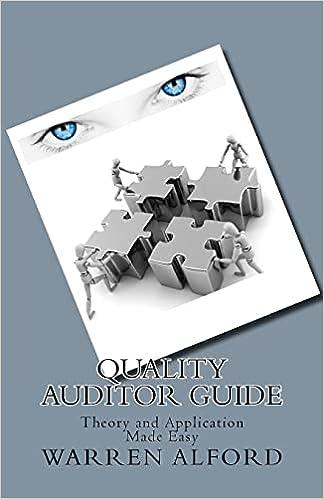Nook Industries has two manufacturing departments-Molding and Assembly. The company used the following data at the beginning of the period to calculate predetermined overhead rates: Estimated total machine-hours (MS) Estimated total fixed manufacturing overhead cost Estimated variable manufacturing overhead cost per MH Molding 5,000 $ 18,000 $ 1.50 Assembly 5,000 $ 29,000 $ 3.00 Total 10,000 $ 47,000 During the period, the company started and completed two jobs--Job E and Job M. Data concerning those two jobs follow: Direct materials Direct labor cost Molding machine-hours Assembly machine-hours Job E Job M $13,900 $8,200 $21,400 $8,200 1,250 3.750 1,250 3.750 Required: a. Assume that the company uses a plantwide predetermined manufacturing overhead rate based on machine-hours. Calcu that overhead rate. (Round your answer to 2 decimal blaces.) b. Assume that the company uses a plantwide predetermined manufacturing overhead rate based on machine-hours. Calcul the amount of manufacturing overhead applied to Job E. (Do not round intermediate calculations.) c. Assume that the company uses a plantwide predetermined manufacturing overhead rate based on machine-hours. Calcul the total manufacturing cost assigned to Job E. (Do not round intermediate calculations.) d. Assume that the company uses a plantwide predetermined manufacturing overhead rate based on machine-hours and us markup of 20% on manufacturing cost to establish selling prices. Calculate the selling price for Job E. (Do not round Intermediate calculations.) e. Assume that the company uses departmental predetermined overhead rates with machine-hours as the allocation base in both departments. What is the departmental predetermined overhead rate in the Molding department? (Round your answer 2 decimal places.) f. Assume that the company uses departmental predetermined overhead rates with machine-hours as the allocation base in hath nroduction departments. What is the departmental predetermined overhead rate in the Assembly department? (Round manufacturing overhead rate based on mac on manufacturing cost to establish selling prices. Calculate the selling price for Job E. (Do Intermediate calculations.) e. Assume that the company uses departmental predetermined overhead rates with machine-hours as the both departments. What is the departmental predetermined overhead rate in the Molding department? (R 2 decimal places.) f. Assume that the company uses departmental predetermined overhead rates with machine-hours as the both production departments. What is the departmental predetermined overhead rate in the Assembly de your answer to 2 decimal places.) g. Assume that the company uses departmental predetermined overhead rates with machine-hours as th both production departments. How much manufacturing overhead will be applied to Job E? (Do not roun calculations.) h. Assume that the company uses departmental predetermined overhead rates with machine-hours as th both production departments. Further assume that the company uses a markup of 20% on manufacturing selling prices. Calculate the selling price for Job E. (Do not round Intermediate calculations.) a. $ 6.95 per MH 17,375 67.775 Predetermined overhead rate b. Manufacturing overhead applied C! Manufacturing cost d. Selling price Molding predetermined overhead rate 1. Assembly predetermined overhead rate g Manufacturing overhead applied job E n. Selling price for job E e per MH per MH During the period, the company started and completed two jobs-Job E and Job M. Data concerning those two jobs follow: Direct materials Direct laber cost Molding machine-hours Assembly machine-hours Job Job M $13,900 $8,200 $21,400 $8,200 1,250 3, 750 1,250 3,750 Required: a. Assume that the company uses a plantwide predetermined manufacturing overhead rate based on machine-hours. Calculate that overhead rate. (Round your answer to 2 decimal places.) b. Assume that the company uses a plantwide predetermined manufacturing overhead rate based on machine-hours. Calculate the amount of manufacturing overhead applied to Job E. (Do not round intermediate calculations.) c. Assume that the company uses a plantwide predetermined manufacturing overhead rate based on machine-hours. Calculate the total manufacturing cost assigned to Job E. (Do not round Intermediate calculations.) d. Assume that the company uses a plantwide predetermined manufacturing overhead rate based on machine-hours and uses a markup of 20% on manufacturing cost to establish selling prices. Calculate the selling price for Job E. (Do not round intermediate calculations.) e. Assume that the company uses departmental predetermined overhead rates with machine-hours as the allocation base in both departments. What is the departmental predetermined overhead rate in the Molding department? (Round your answer to 2 decimal places.) f. Assume that the company uses departmental predetermined overhead rates with machine-hours as the allocation base in both production departments. What is the departmental predetermined overhead rate in the Assembly department? (Round your answer to 2 decimal places.) 9. Assume that the company uses departmental predetermined overhead rates with machine-hours as the allocation base in both production departments. How much manufacturing overhead will be applied to Job E? (Do not round intermediate calculations.) h. Assume that the company uses departmental predetermined overhead rates with machine-hours as the allocation base in both production departments. Further assume that the company uses a markup of 20% on manufacturing cost to establish selling prices. Calculate the selling price for Job E. (Do not round Intermediate calculations.)









